The AnandTech Coffee Lake Review: Initial Numbers on the Core i7-8700K and Core i5-8400
by Ian Cutress on October 5, 2017 9:00 AM EST- Posted in
- CPUs
- Intel
- Core i5
- Core i7
- Core i3
- 14nm
- Coffee Lake
- 14++
- Hex-Core
- Hyperthreading
Grand Theft Auto V
The highly anticipated iteration of the Grand Theft Auto franchise hit the shelves on April 14th 2015, with both AMD and NVIDIA in tow to help optimize the title. GTA doesn’t provide graphical presets, but opens up the options to users and extends the boundaries by pushing even the hardest systems to the limit using Rockstar’s Advanced Game Engine under DirectX 11. Whether the user is flying high in the mountains with long draw distances or dealing with assorted trash in the city, when cranked up to maximum it creates stunning visuals but hard work for both the CPU and the GPU.
For our test we have scripted a version of the in-game benchmark. The in-game benchmark consists of five scenarios: four short panning shots with varying lighting and weather effects, and a fifth action sequence that lasts around 90 seconds. We use only the final part of the benchmark, which combines a flight scene in a jet followed by an inner city drive-by through several intersections followed by ramming a tanker that explodes, causing other cars to explode as well. This is a mix of distance rendering followed by a detailed near-rendering action sequence, and the title thankfully spits out frame time data.
There are no presets for the graphics options on GTA, allowing the user to adjust options such as population density and distance scaling on sliders, but others such as texture/shadow/shader/water quality from Low to Very High. Other options include MSAA, soft shadows, post effects, shadow resolution and extended draw distance options. There is a handy option at the top which shows how much video memory the options are expected to consume, with obvious repercussions if a user requests more video memory than is present on the card (although there’s no obvious indication if you have a low-end GPU with lots of GPU memory, like an R7 240 4GB).
To that end, we run the benchmark at 1920x1080 using an average of Very High on the settings, and also at 4K using High on most of them. We take the average results of four runs, reporting frame rate averages, 99th percentiles, and our time under analysis.
All of our benchmark results can also be found in our benchmark engine, Bench.
MSI GTX 1080 Gaming 8G Performance
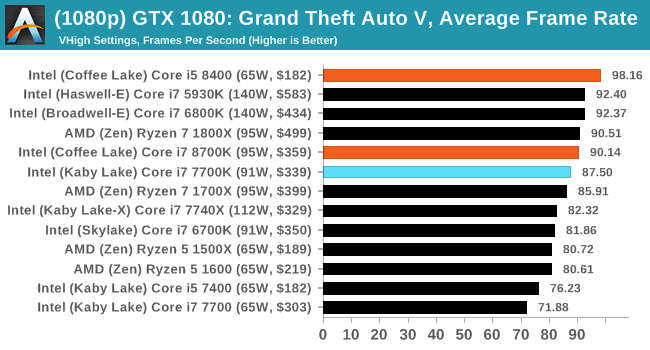
1080p

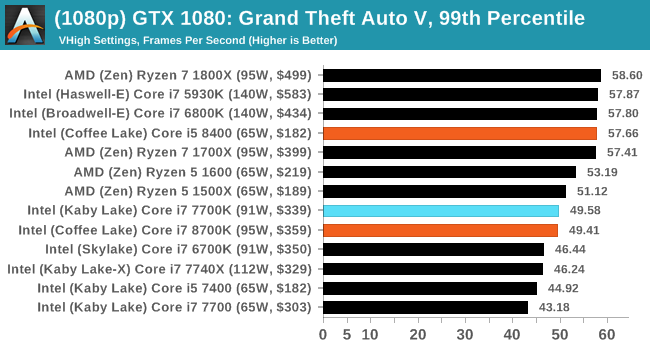
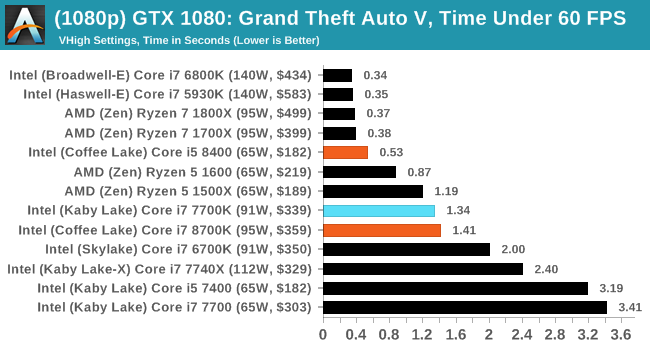
4K
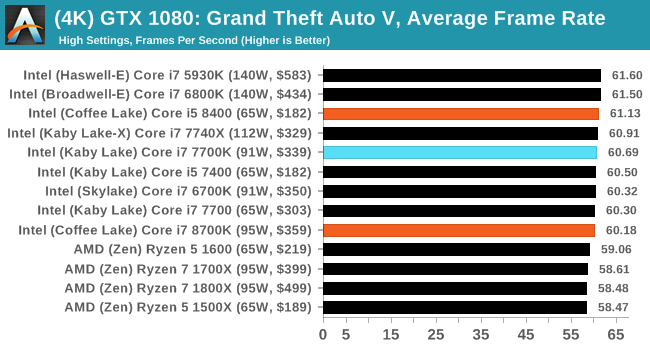
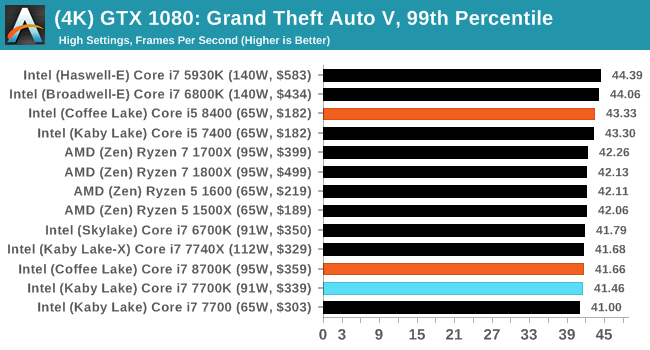




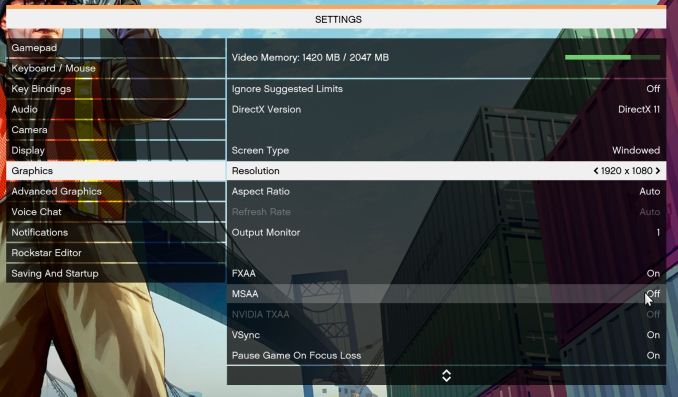








222 Comments
View All Comments
risa2000 - Friday, October 6, 2017 - link
This actually makes sense. I wonder how Ian explains (even to himself) that additional 2 new cores in i7-8700K do not push the power envelope at all compared to i7-7700K. Is it because in Anandtech benchmark 8700K uses only 4 cores? Or uses 6 but throttles them down to stay in power limit?sonny73n - Friday, October 6, 2017 - link
I was also puzzled about some test results in this review but after reading thru the comment section, I conclude that this is indeed his worst review to date. He mentioned that he only had 3 days for this review. Maybe this is the reason.sonny73n - Friday, October 6, 2017 - link
I forgot to mention his lack of AMD comparisons among little mistakes here and there.DanNeely - Friday, October 6, 2017 - link
At a guess Anands temp test isn't using the bigger AVX sizes because at full load the hugely wide calculations use a lot more power than anything else; to the extend that by default they have a negative clock speed offset of several hundred MHz. I'm not sure how or if MCT shenanigans affect the AVX clock speed.Ian Cutress - Saturday, October 7, 2017 - link
You'd be surprised at how aggressively Intel is binning. We've said for a long while that Intel never pushes its chips to the limits in DVFS or frequency (like AMD), so if they were willing to make higher SKUs and commit to their usual warranty, it should be an easy enough task.Our power benchmark loads up all threads.
Ian Cutress - Saturday, October 7, 2017 - link
Is Paul/Igor testing at-wall power consumption at stock? That might add a bunch. Even the lower end CPUs seem out of whack there. Our power numbers are just for the CPU, not the at wall.Our numbers are derived from the internal calibration tools that the processor uses to determine its own power P-states, which in effect is directly related to the turbo. We run a P95 workload during our power run, and pull the data from the internal tools after 30 seconds of full load, which is long enough to hit peak power without hitting any thermal issues or PL2/PL3 states.
There seems to be a lot of boards that screw around with multi-core turbo this generation, which may also lead to higher power consumption numbers.
MingoDynasty - Thursday, October 5, 2017 - link
There is a typo in the article. 7700K has a TDP of 91W, not 95W.Ian Cutress - Saturday, October 7, 2017 - link
Intel played shenanigans with the 7700W TDP. They gave it as one value in the first briefings, then switched to the other just before launch, then switched back again after launch.mapesdhs - Tuesday, October 10, 2017 - link
I know it's only a typo, but I still had to laugh at "7700W TDP". ;D#EditingForATForums
W1nTry - Thursday, October 5, 2017 - link
There also seems to be a price change to the 1800x and 1700x which are as much as 100USD lower than what's reflected on the charts. I think that would factor in notably.